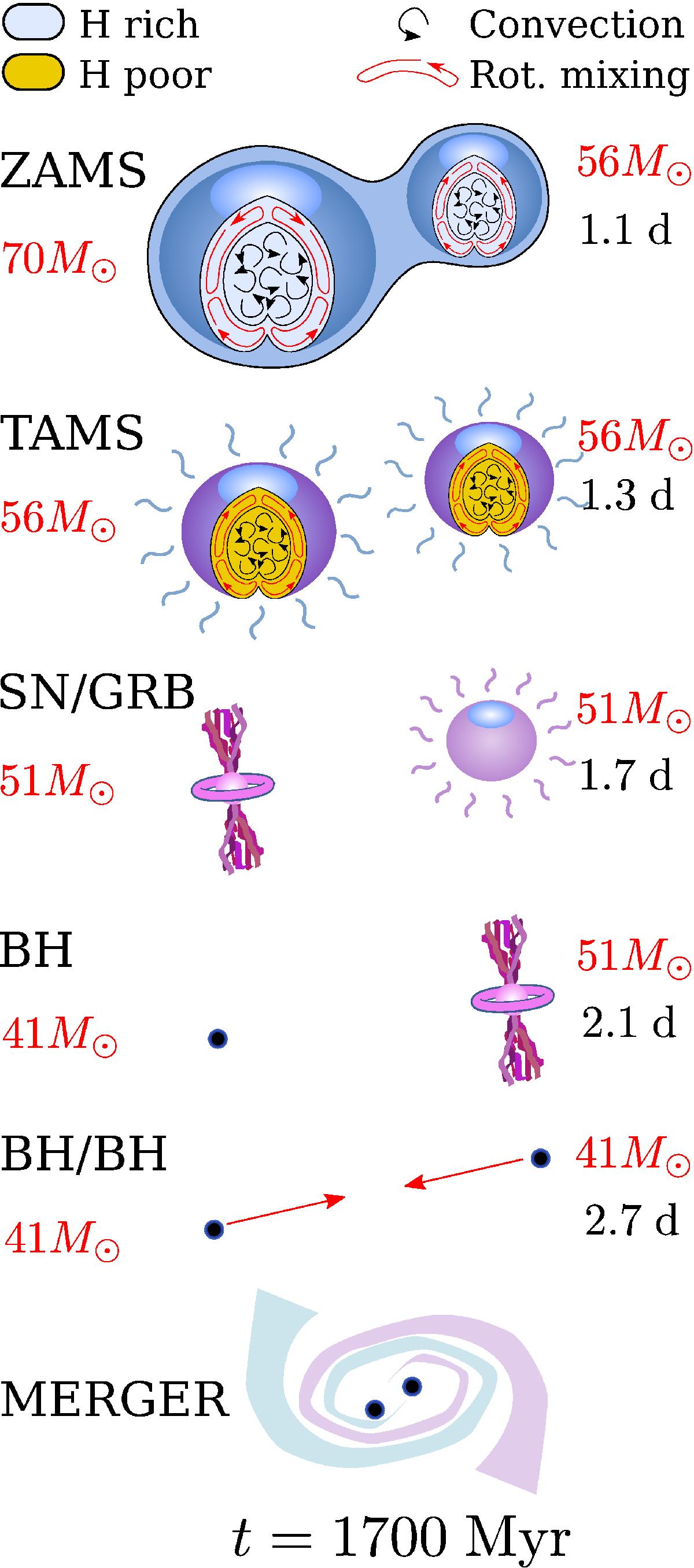Fig. 1

CHE channel for the formation of double-BHs, including the occurrence of an overcontact phase as in Marchant et al. (2016). Numbers correspond to a system with Z = Z⊙/ 50, initial masses M1 = 70 M⊙ and M2 = 56 M⊙, and a very short initial period at the zero-age main sequence (ZAMS). This system evolves early on into a contact configuration where mass is transferred back and forth until a mass ratio of unity is achieved. Efficient rotational mixing distributes the helium-rich material from the core throughout the entire envelope, resulting in an almost pure helium star at the terminal-age main sequence (TAMS). Depending on the final masses of each component, the system may then proceed to form a compact BH binary that can merge within a Hubble time, or explode as a PISNe. The models from Marchant et al. (2016) had an error in the computation of spin-orbit coupling which resulted in slightly wider orbits. We have corrected for this, so the values differ slightly from those in Marchant et al. (2016). We have also verified that the conclusions of that work remain valid despite this issue.
Current usage metrics show cumulative count of Article Views (full-text article views including HTML views, PDF and ePub downloads, according to the available data) and Abstracts Views on Vision4Press platform.
Data correspond to usage on the plateform after 2015. The current usage metrics is available 48-96 hours after online publication and is updated daily on week days.
Initial download of the metrics may take a while.


